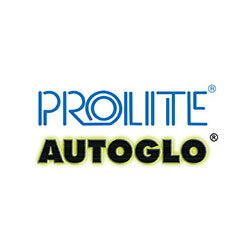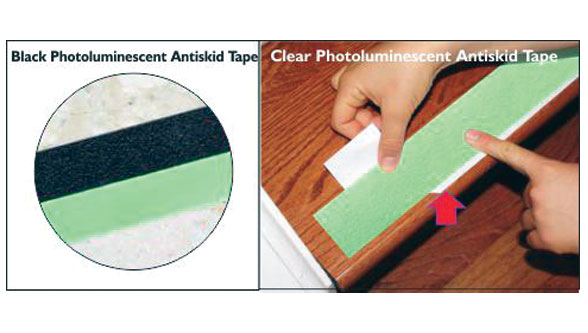If little knowledge is to be deemed a dangerous thing then anybody who does not understand or know the purpose or utility of signage’s in the safety industry fully well, is certainly in danger and his ignorance may be putting others to risk as well.
When visibility is poor, anything that glows seems to be a blessing to those in darkness. The instinct is to run towards that lighted object. But a lighted object itself, like say a bulb, is incomplete insofar as safety of the concerned person or persons is not assured because any obstacles in the way may still be invisible. The possibility of people tripping over or colliding into objects and injuring themselves-even fatally- while running or even walking towards that light source is very much a possibility.
So why not pick up some basics on Photoluminescent signage’s and their purpose right here right now?
What are photoluminescent signs all about? And what is their role in the safety segment?
Luminous paints, as the name suggests, are coatings that emit light. Luminous paints are of two types, one wherein the paint glows after getting charged by a certain light source, such as sunlight, ultraviolet and others – this type contains non-radioactive elements, whereas the second type of luminous paints contain radioactive elements. Due to their long durability and strong intensity, luminous paints give booming opportunities for work areas with low light levels and are feasible replacements for sources that consume electric power or batteries.
Essentially, Glow in the dark, Photoluminescent signs use a material which self-charges using ambient light. ‘Luminescent’ describes a material which emits light and glows. ‘Photo’ often means light, such as in the word ‘photograph’, which means the recording of light. So simply put, ‘Photoluminescent’ refers to something which absorbs light energy and releases that energy in the form of light.
The most common and obvious use of this can be seen in EXIT signs in stadium, auditoriums, busy shopping complexes, cinema theatres etc. Photoluminescent Exit Signs, recognized as glow in the dark, are charged by an external light source. Photoluminescent Exit Signs absorb ambient light and then discharge the stored light over time when a black out or power failure occurs.
Photoluminescent is perfect for making signs stand out, especially should the power fail. They provide an effective, bright contrast for text and graphical symbols so that safety messages are quickly recognised. It is possible to get all different types of Photoluminescent fire safety signs, meaning they’re effective for every situation. Although not all fire safety signs use a Photoluminescent material, a lot of them do.
It means that whatever happens, people can still use the fire safety signs to help them evacuate in a quick and safe manner.
You can also get paint with Photoluminescent properties, which makes it work in the same way. This could allow you paint lines down corridors that would lead people to a fire exit. Another possible use is to warn others of steps or to make a pillar stand out to stop people tripping over them at night.
So purchasing Photoluminescent fire safety signs allows you optimise safety without an extra cost. And they are still designed to be durable and hard-wearing, so they are ideal for use both indoors and out.
NBC IN INDIA
Building codes specify minimum standards for the construction of buildings. The main purpose of building codes are to protect public health, safety and general welfare as they relate to the construction and occupancy of buildings and structures. The National Building Code of India (NBC), a comprehensive building Code, is a national instrument providing guidelines for regulating the building construction activities across the country.
The Code mainly contains administrative regulations, development control rules and general building requirements; fire safety requirements; stipulations regarding materials, structural design and construction (including safety); building and plumbing services; approach to sustainability; and asset and facility management.
The Code was first published in 1970 at the instance of Planning Commission and then first revised in 1983. Thereafter three major amendments were issued to the 1983 version, two in 1987 and the third in 1997. The second revision of the Code was in 2005, to which two amendments were issued in 2015.
Exigency protocols as per NBC make it mandatory to have signage’s, Photoluminescent as also regular ones, to ensure safe and quick evacuation of people trapped in enclosed dark environments in cases of a fire, blast , blackout or similar situations where there is risk to life and limb and time is critical.
Exigency rules and paraphernalia governing construction and maintenance of enclosed spaces
The building code is clear in that exigency protocols that include clutter free escape route, emergency lights, signage’s and path finding paraphernalia in fire situations are mandatory.
A must to ensure protection in conditions of poor visibility or darkness is the Photoluminescent or ‘glow’ sign/marker. Photoluminescence occurs when a material absorbs photons (light energy) and emits them when the light source is removed. This is commonly seen in ‘glow-in-the-dark’ objects such as children toys. When this is applied to safety signs it helps provide guidance in darkened conditions.
Speaking of signage’s and markers how many of us know that since the introduction of the Safety Signs and Signals Regulations in 1996 in Britain, there has been a downward trend in the number of fatal work-related injuries. In 1996 there were 0.9 fatal injuries per every 100,000 workers, in 2017 the figure is 0.4. Isn’t that a step worth emulating here in India?
Signs such as these have a lifespan of up to twenty-five years when used indoors, as they are maintenance free there is no need for costly regular testing regimes associated with ensuring the correct functionality of electrical signs.
In addition to their cost effectiveness, the eco-friendly signs help reduce the carbon footprint of businesses and corporations. Enterprises will have different requirements for their signage and some may choose to use electrical signage. However, having fire exit and hazard signs lit 24 hours a day, 365 days a year, they will contribute to the fuel costs of a company. A photoluminescent sign only needs a good source of light to work.

For more information,
Website: www.prolite.in

